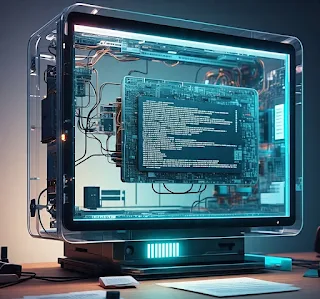Computer ke kitne generations hain?
Computer ke kitne generations hain?
Computer ke Generations ko unke technological
advancements aur development ke basis par five main generations mein divide
kiya gaya hai. Har generation mein hardware aur software ki technologies mein
significant improvements ki gayi hain. Yeh generations 1st se lekar 5th tak
categorized hain:
1st Generation (1940–1956)
 |
| Vacuum Tubes Computer |
- Technology:
Vacuum Tubes
- Key
Features:
- First-generation
computers ne vacuum tubes ka use kiya tha for processing data and
calculations.
- Extremely
large size, inefficient energy consumption, and heat generation.
- Slow
speed aur limited capabilities the.
- Examples:
- ENIAC
(Electronic Numerical Integrator and Computer)
- UNIVAC
I (Universal Automatic Computer)
Key Points:
- Limited
memory and processing power.
- No
operating system, just manual programming.
- Used
for basic scientific and military calculations.
2nd Generation (1956–1963)
 |
| Transistors |
- Technology:
Transistors
- Key
Features:
- Transistors
ne vacuum tubes ko replace kiya, jo chhote, reliable, aur
energy-efficient hote the.
- Faster
processing speed, reduced power consumption, and smaller size.
- Magnetic
core memory used for storage.
- Examples:
- IBM
7090
- UNIVAC
1108
Key Points:
- Operating
systems and assembly languages became more widely used.
- Cost
and size of computers reduced, making them more accessible to businesses
and research organizations.
3rd Generation (1964–1971)
.jpeg) |
| Integrated Circuits (ICs) |
- Technology:
Integrated Circuits (ICs)
- Key
Features:
- Integrated
Circuits (ICs) ke use se computers ka size aur power consumption aur
bhi kam ho gaya tha.
- Improved
processing power, faster operation, and better memory.
- Development
of high-level programming languages such as COBOL and FORTRAN.
- Examples:
- IBM
360
- CDC
6400
Key Points:
- Introduction
of multi-tasking and multi-user capabilities.
- Enhanced
user interfaces like punch cards and early versions of keyboard and
screen-based interaction.
4th Generation (1971–Present)
- Technology:
Microprocessors
- Key
Features:
- Microprocessors
ka use shuru hua, jisme saara computer ka processing power ek single chip
mein integrate ho gaya.
- Computers
became even smaller, cheaper, and more powerful.
- Rise
of personal computers (PCs) with graphical user interfaces (GUIs).
- Development
of Laptops, PCs, and Workstations.
- Examples:
- Intel
4004 (First Microprocessor)
- Apple
Macintosh
- IBM
PCs
Key Points:
- Development
of personal computers for individual use.
- Improved
graphics, multimedia, and networking capabilities.
- Operating
systems like Windows, Mac OS, and Unix gained
prominence.
5th Generation (Present and Beyond)
- Technology:
Artificial Intelligence (AI), Quantum Computing, and Nanotechnology
- Key
Features:
- 5th
generation computers are characterized by the integration of Artificial
Intelligence (AI), Machine Learning, and Quantum Computing.
- High-performance
systems, including those used for complex simulations, robotics, and
advanced computing applications.
- More
focus on parallel processing, neural networks, and cloud
computing.
- Developing
potential for quantum computers with capabilities far beyond
classical computing.
- Examples:
- IBM
Quantum Computer
- Google's
AI-based systems
- Supercomputers
like Fugaku (Japan's exascale supercomputer)
Key Points:
- Systems
capable of speech recognition, natural language processing, and image
processing.
- Increasing
emphasis on distributed systems, cloud computing, and edge
computing.
- Research
and development in quantum computing and advanced AI.
Summary of Computer Generations
|
Generation |
Key Technology |
Time Period |
Key Features |
|
1st Generation |
Vacuum Tubes |
1940–1956 |
Large size, slow speed, high power consumption. |
|
2nd Generation |
Transistors |
1956–1963 |
Smaller, faster, more reliable than 1st gen. |
|
3rd Generation |
Integrated Circuits (ICs) |
1964–1971 |
Smaller, faster, multi-tasking, high-level languages. |
|
4th Generation |
Microprocessors |
1971–Present |
Personal computers, improved GUIs, cheaper, faster. |
|
5th Generation |
AI, Quantum Computing |
Present and Beyond |
AI, Machine Learning, Quantum Computing, Robotics. |
Conclusion:
- Har
generation mein technology aur processing power mein
significant improvements hui hain, jo computing devices ko smaller,
faster, aur more powerful banata gaya hai.
- 5th
generation ki focus AI aur quantum computing par hai, jisse hum future
mein computing ki naye dimensions explore kar sakte hain.



टिप्पणियाँ
एक टिप्पणी भेजें